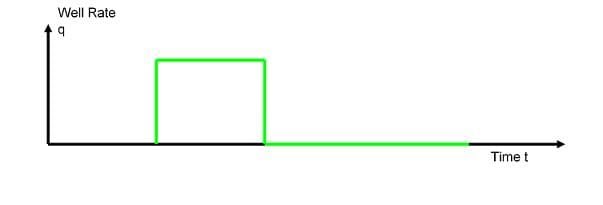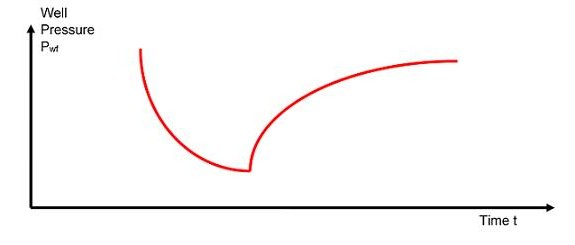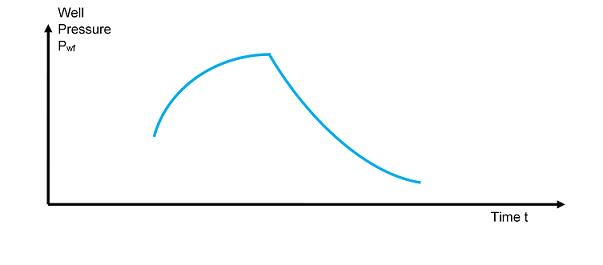What is Well Testing ?
After flowing a well over a stable period via a flow meter (test separator meter, orifice place, MPFM…), shutting-in the well with a surface or downhole valve for a finite time interval defines a well test.

For a producer, pressure at the well builds up during a test:
This is called a Pressure Build-Up (PBU) test.
For an injector, pressure at the well falls off during a test:
This is called a Pressure Fall-Off (PFO) test.
Information gained from well test
By measuring flow rates at surface and pressure with a downhole gauge, a well test provides information on well productivity and reservoir performance over a large scale of investigation (skin, permeability, connected volume, reservoir pressure…).
Well test interpretation is a process of recovering this information by exploring the pressure data with special tools and techniques. It is a non-unique process, which leads to a range of possible interpretations that are consistent with the pressure data. Geological, geophysical and petrophysical views would reduce the range of possible solutions. In that sense, well testing is one of the keys to understand well & reservoir performance and could be seen as the link between the different subsurface disciplines. It plays a central role in reservoir and petroleum engineering.
On an exploration and appraisal well, this surveillance activity is used to confirm an oil/gas reservoir discovery, well productivity, initial pressure, reservoir heterogeneities and boundaries, hydraulic connectivity, etc… Bottom-hole fluid samples are also taken for PVT laboratory analysis and sand production could be tested.
On a production/injection well, initial PBU/PFO tests are performed a few days after start-up as baseline tests. In addition to initial reservoir pressure data, the interpretation will provide information on the average permeability thickness (kh) and initial skin after drilling and completing the well. These results should be reviewed in a post well review to assess the drilling and completion performance. This initial test defines the initial well productivity and will be used as the reference response, against which later tests could be compared to.
Then periodic tests (often opportunistic thanks to permanent downhole gauges) are performed to adjust the reservoir description (average reservoir pressure), monitor well properties (effective KH and skin) over time and predict possible water breakthrough. A performance deviation, such as a change in rate of decline, may be caused by changing wellbore damage (skin) or/and by pressure support problems. This would be understood by a combination of well testing and production logging, and could result in the need for well treatment so as to maximize the well’s production life.
Some applications in surveillance
Some other applications in surveillance for producing fields include:
-
Quality control rate measurement and allocation,
-
Assess a well intervention with pre and post PBU tests.
-
Detect a gas breakout in an oil well or a liquid drop out in a gas condensate well, support the value of saturation pressure and understand the influence of multiphase region spreading away from the well.
-
Detect waterfront and support relative permeability curves with waterflooded fields.
Shut-ins on water injectors will help to:
-
Monitor frac size and injectivity over time
-
Detect thermally induced fractures, with limited frac height for example
-
Ensure no excessive frac growth with injection pressure (safe operations)
-
Detect oil/water front and assess the impact of cold water front.
-
Assess the impact of water quality on performance (seawater vs produced water, temperature) and detect fracture closure



